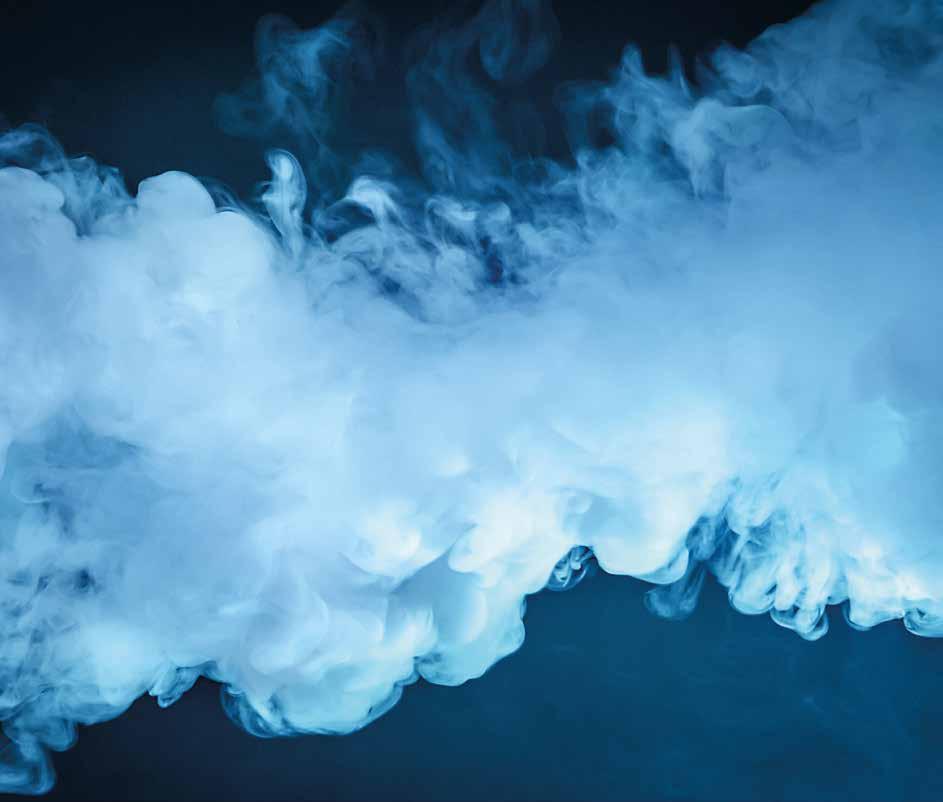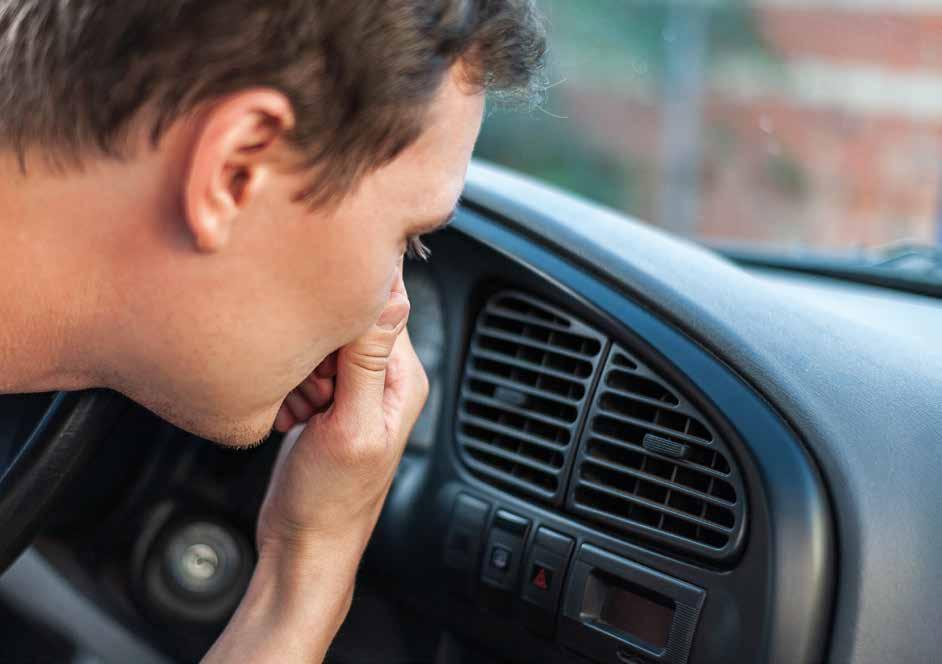
7 minute read
Something Smells in Here
SOMETHING SMELLS IN HERE! AN OCCUPATIONAL HYGIENIST’S EXPERIENCES OF INVESTIGATING ODOURS IN THE WORKPLACE
MICK GRAY, LFOH
Advertisement
It all started many years ago when I was asked by a client to try and identify the strange odour that appeared occasionally in his office and was upsetting staff. Most odours are volatile organic compounds with some odours from recognised inorganic compounds like the bad egg smell from hydrogen sulfide and the acidic odour of sulfur dioxide.
The first thing I realised was that people’s ability to detect an odour was variable with some individuals detecting odours at extremely low levels and others at a level some 100 times more concentrated. Odour thresholds as published are not written in stone and vary greatly from individual to individual. The other anomaly is that an individual’s description of the odour also varies greatly and quite often can be misleading.
The second thing I realised was that the concentration of that detectable odour can be less than 1ppb or 1µg/m3. Although we have not got the odour detection limit of a cocker spaniel, we are still very sensitive to odours and therefore ppm levels are no good and unless we can get down to nanogram level on the collection tube we will be wasting our time.
So, as a hygienist we are equipped to collect the volatile organic compound on a multibed or Tenax tube using a low flow pump for a 5-10 litre sample. The standard thermal desorption (TD) GC-MS method is the one used for this work. The tube will be desorbed at 2750C and the organic vapours cryofocussed (-300C) before flashvaporisation onto thick film (3μm) capillary GC column (Rtx-5, 30mm, 0.32mm id). The Multibed tube will be spiked with an external standard (o-xylene-d10).
This will not give us absolute concentration values but good guidelines and a good library fit for the number and nature of the compounds detected.
Once we have the analysis report the real research begins. We have to detect which compound or group of compounds are unusual in this indoor environment and are causing the odours. We are looking for chloro, fluoro, sulfur, aldehyde and amine compounds and possibly high boiling alcohols. Once we have identified a possible suspect, we than must try and identify where it comes from or how it might be produced accidently. Although the client needs you to identify the odour, what he really wants is to get rid of it and Identify the cause to prevent it happening again. Another use of this technique is what we call the fingerprint analysis. That is, you have an odour penetrating your office/ building possibly from a neighbouring company with a specific odour mixture.
One of my first experiences was back in November 2002. I was working with a company who had carried out forensic work on VOC odours and I got to know the chemist Dr Bob Large (sadly no longer with us). Bob had been involved with the Soham Murders case in trying to identify the source of the petrol used to burn the bodies in the ditch. This was identified as coming from the local garage. Bob, in the meantime, had picked another murder case, and had asked me to go out sampling with the Essex police at various locations around the areas. The case was a murder investigation, Ian Jarvis had strangled his brother’s girlfriend, Marie Couldridge, and set fire to her and her flat to hide the evidence. When Jarvis was arrested the police noticed his clothes smelt of smoke. He had gone back to the flat to make sure the flat was burning and add more accelerant. When he entered the building her body was smouldering, Jarvis’s clothes picked up the odour of the burning fatty tissue along with all the other VOCs. Following Jarvis’s arrest next morning his clothes were collected and sealed in a nylon bag. TD GC-MS was able to identify the smoke odour on Jarvis’s clothes contained the unique odour of burning fatty tissue from a human body.
I can see you asking what was my role in all of this. Because Jarvis had said that he had made a bonfire in a field, he had also been to a greasy café and had a bacon sandwich and to a smoky pub for a drink, we had to go to all these places and sample the indoor air to identify the different odours detected and eliminate them from the analysis.

SOME ODOUR DETECTION SURVEYS
I was once asked to go to a bank due to an odour problem which was re-occurring every 2-3 months causing the staff to have watering stinging eyes that lasted for 10-15 minutes. One of my main problems is being there when the odour is present, so in this case I left a couple of pumps and tubes and showed the maintenance staff how to take the samples. About a month later I got a call to pick up the samples and have them analysed.
The GC-MS scan showed over 90 VOCs on the scan which is common for an indoor air environment. One compound stood out from the usual VOCs. This compound was Methyl Sulfonyl Chloride present at less than 1ppb. This compound is a lachrymator and is possibly the cause of stinging eyes. This is an unusual compound to find within the indoor environment, so where did it come from? Research showed that the most likely cause was a reaction with organic matter and sulfur, chlorine products. During the survey I had looked around the building and saw that the air handling system air intake was at low level. I questioned the maintenance staff with regard to any activity involving chemicals, drain cleaners etc. To my surprise they admitted that they had used sulfuric acid drain cleaner and as they always do pour a quantity of bleach down the drain as a final clean and disinfectant. Hey presto we have the answer. The maintenance staff stopped doing the clean in this way and the problem never returned.
FINGERPRINT ANALYSIS FOR KITCHEN ODOURS
From report:
A Volatile Organic Compound odour scan to nanogram level was carried out in the kitchen and the nearby office area of the bank. The samples were collected to try and establish the source of cooking odours in the office area adjacent to the kitchen. The scan carried out identified 45 compounds in the kitchen and 36 in the office area, of which 25 were identical to the compounds found in the kitchen.
As the kitchen is adjacent to the office wall there is the possibility that there may be some ingress of odours above the ceiling in the void to the office area. This needs a thorough investigation. Consideration should also be given to checking the integrity of the extract duct on the positive side of the fan as any leaks in the duct will add odours to the void.
Further investigation found out that the ceiling voids between the buildings were not isolated as they thought.
IDENTIFICATION OF ODOURS IN VEHICLE:
At the request of a client a Top Ten Volatile Organic Compound scan to nanogram levels was carried out within his brand-new vehicle. During a recall of this new car by a major car manufacturer, an engineer spilled diesel fuel all over the leather seats and in the back well of the car. The seats were renewed and several clean ups were carried out by the manufacturer. After many returns of the car where the client complained of diesel fumes giving him headaches, the manufacturer said, “that

there was nothing else they could do and that no one in their sales team could detect any diesel fumes”. The client was not happy with their response and wanted to confirm that the there was no trace of diesel fumes within the car.
The sample was collected in back seat well on a Tenax tube using a low flow pump to collect an 8.35 litre sample. The vehicle was sampled on a Saturday morning after being stationary overnight.
The combination of compounds detected confirm that there are diesel fumes present within the car with the amount of Ethyl Benzene present at over 5 times the published odour threshold value. Although the concentration of the individual Volatile Organic Compounds (VOCs) were less than any workplace exposure limit for any compounds, the overall concentration of the total VOCs was 922µg/m3 and that’s not including the other 54 additional compounds detected on the tube. The standards for total VOCs in the indoor environment for good air quality are <300µg/m3 (BREEAM) with some standards at levels <500µg/ m3. The static result in the car was virtually three times the BREEAM standard. This level of total VOCs in an office environment would be unacceptable and cause many complaints form staff. High background levels of VOCs tend to cause eye, nose and throat irritation and headaches.
The only VOC detected which is not part of the diesel fuel fraction was Propan-2-ol or Isopropanol which was used in the clean-up.

As result of the report the client got a brand-new car and an apology.









